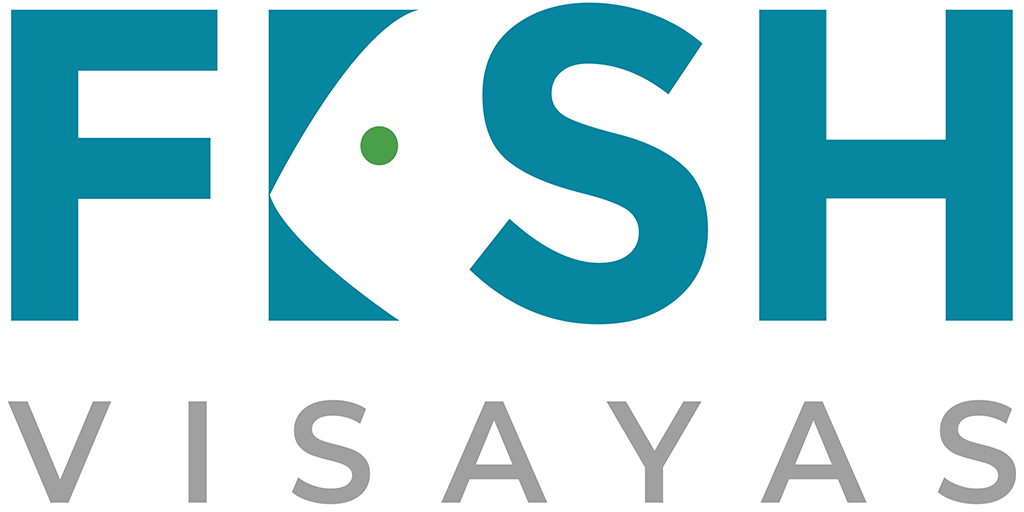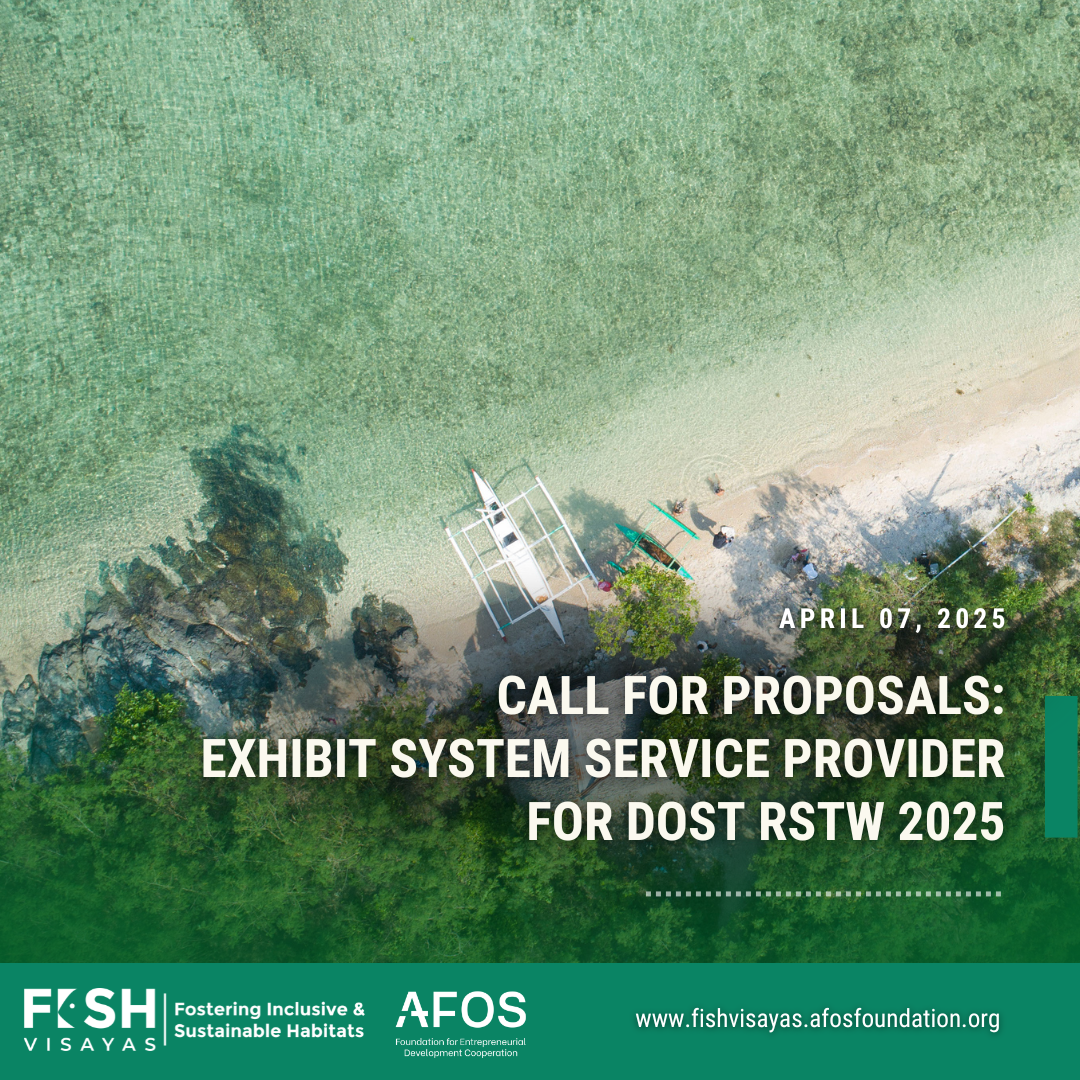RESOURCE PROTECTION
United for the Oceans: Bantayan Strengthens Coastal Conservation Efforts Thru Coastal Clean-Up Activity
By Mary Ruth Ochavillo. Posted on DECEMBER 29, 2024.
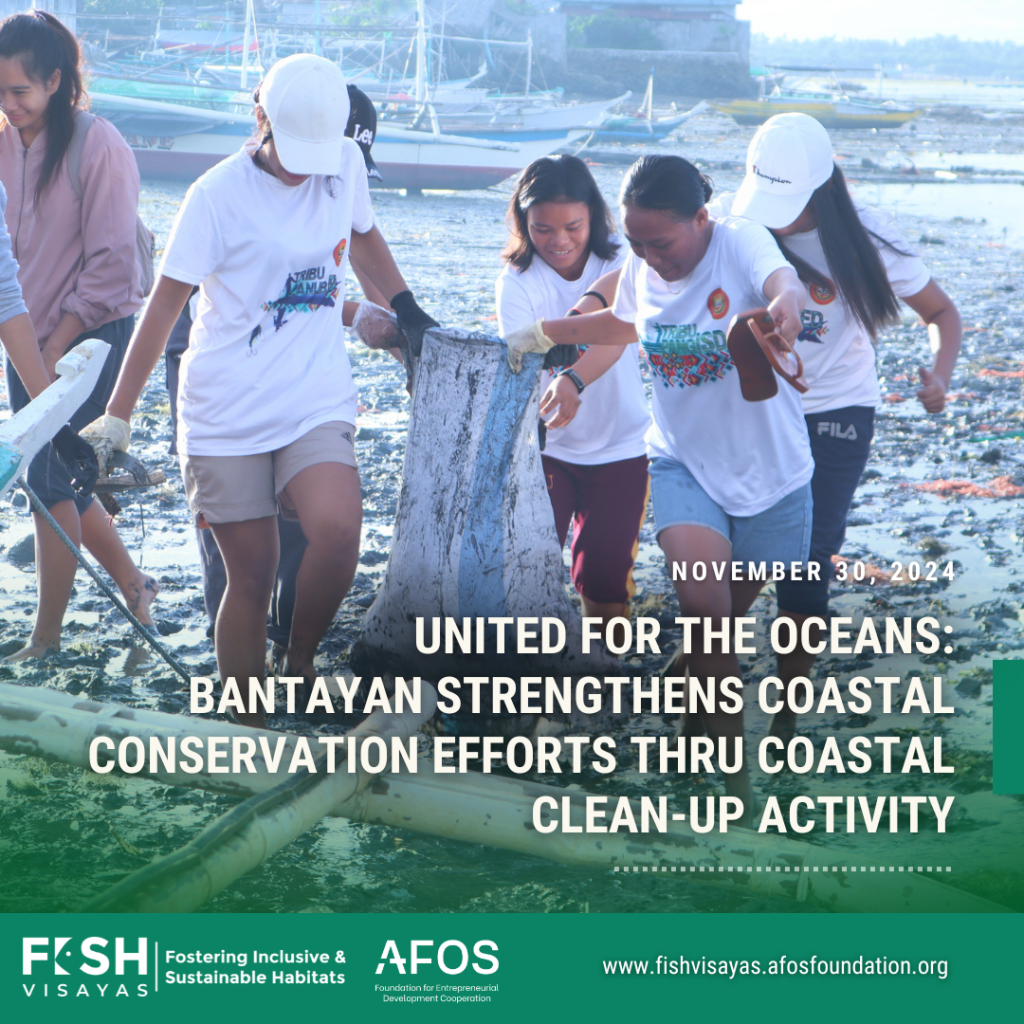
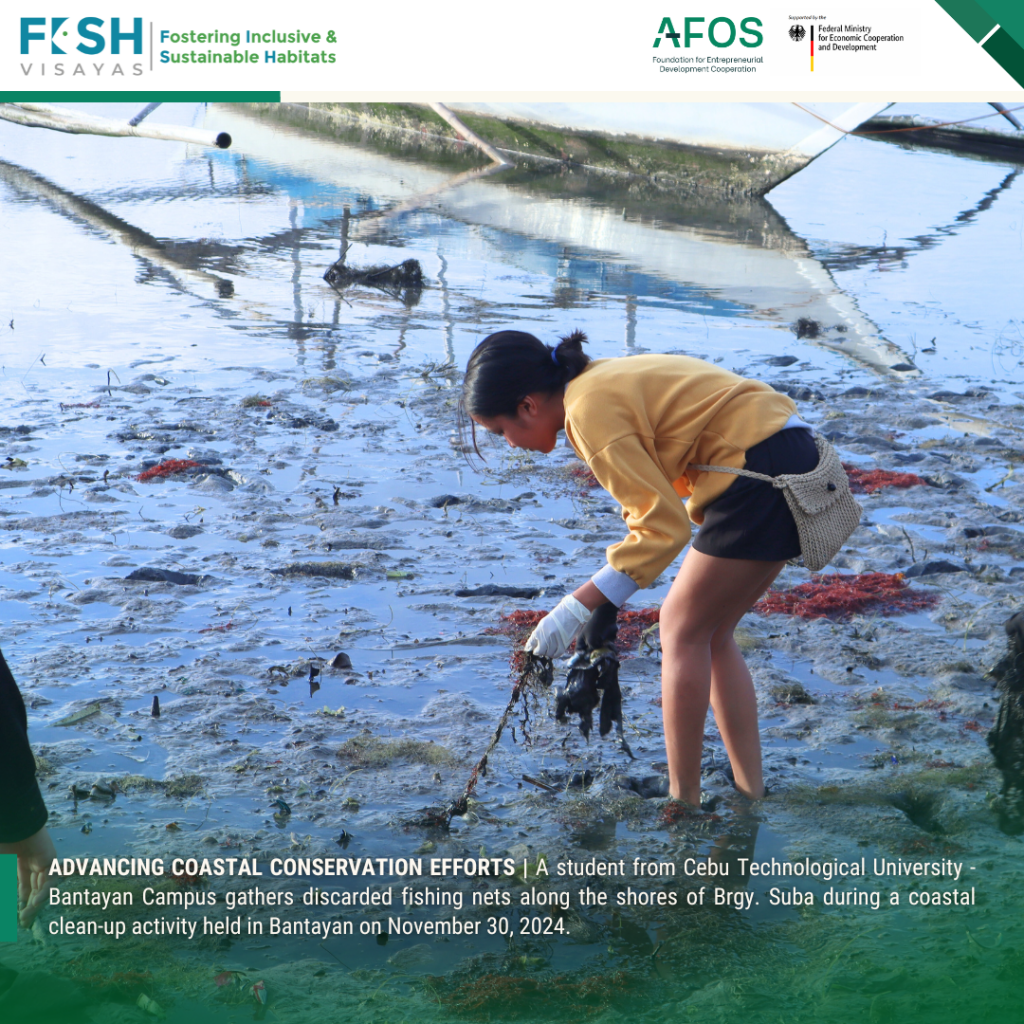
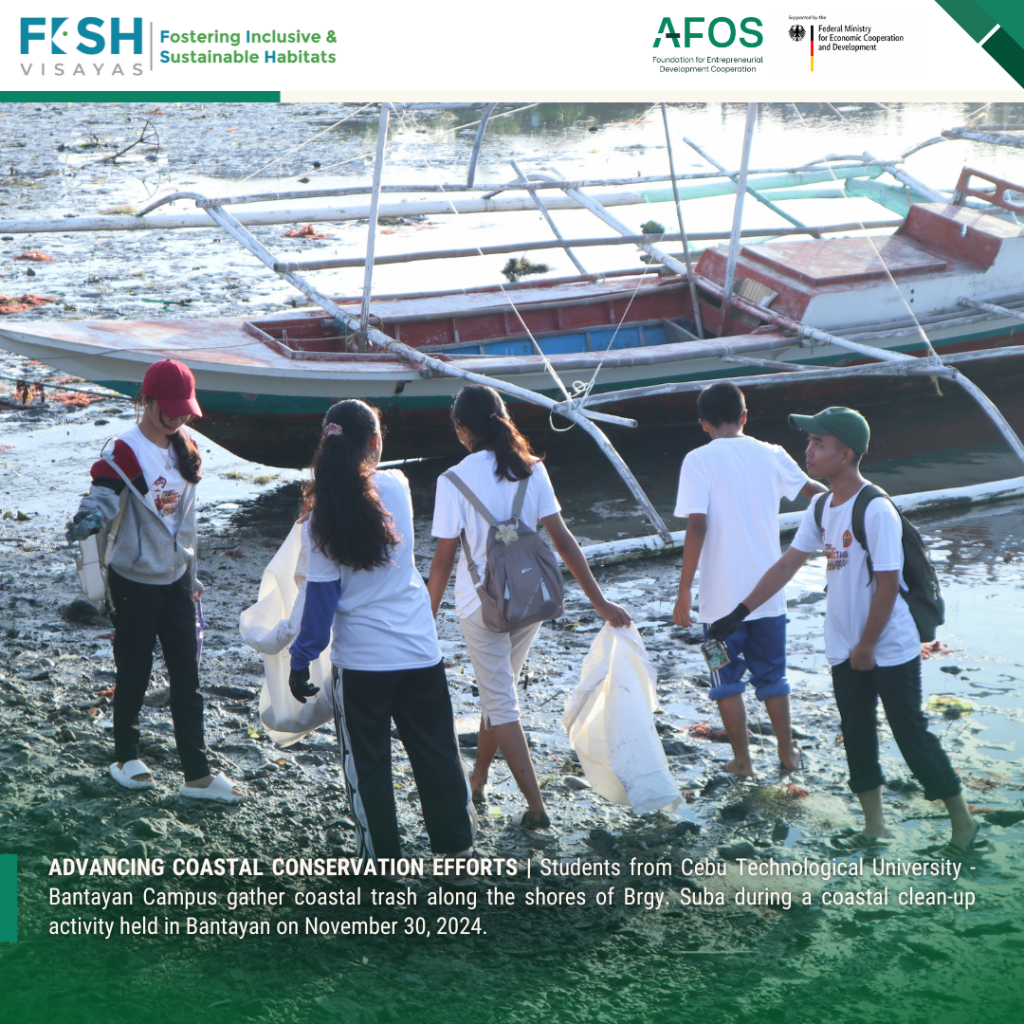
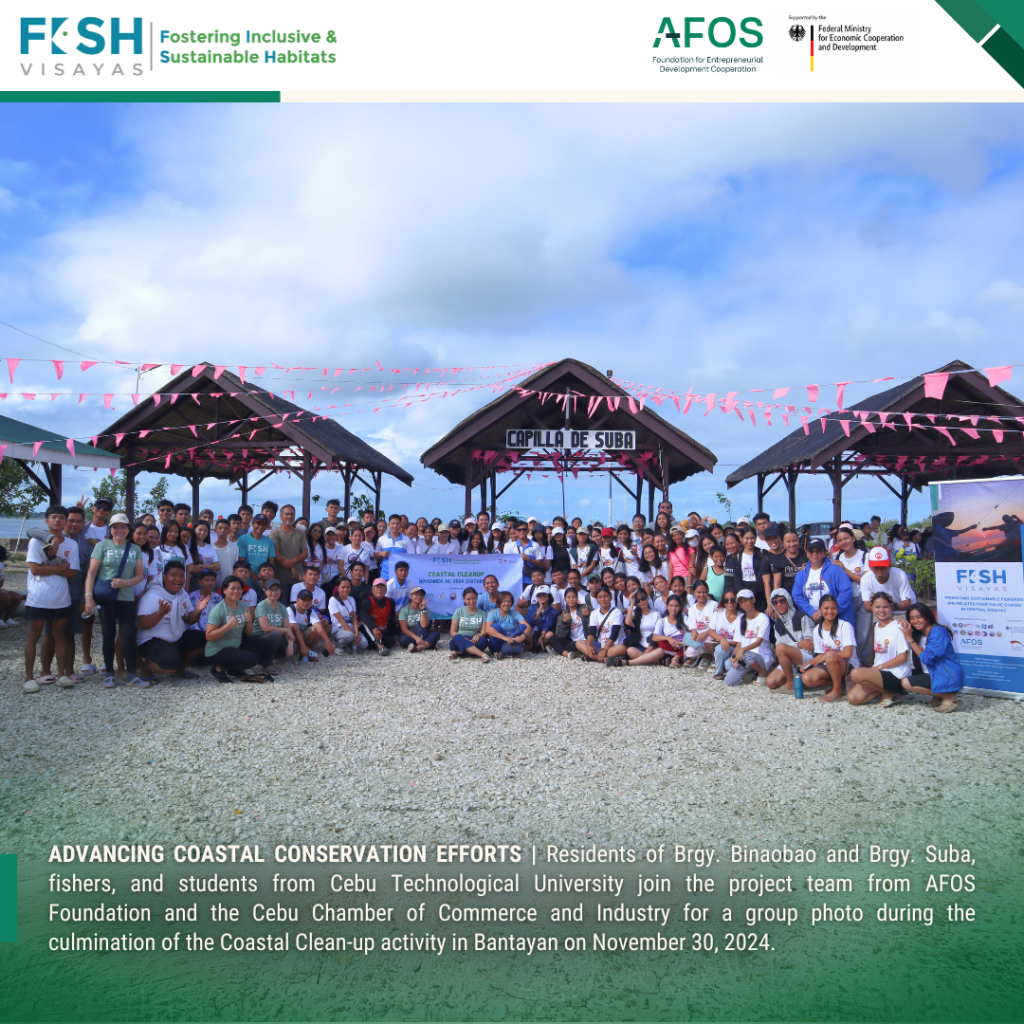
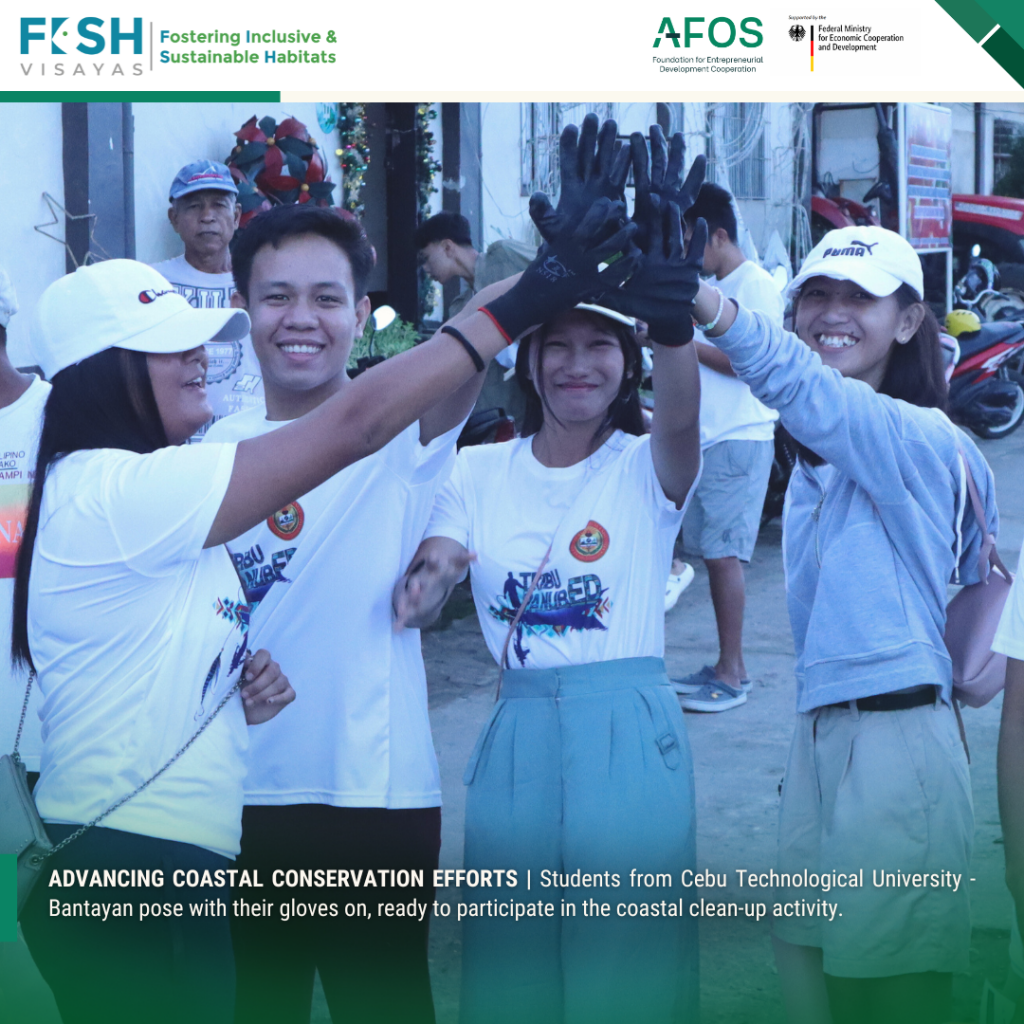
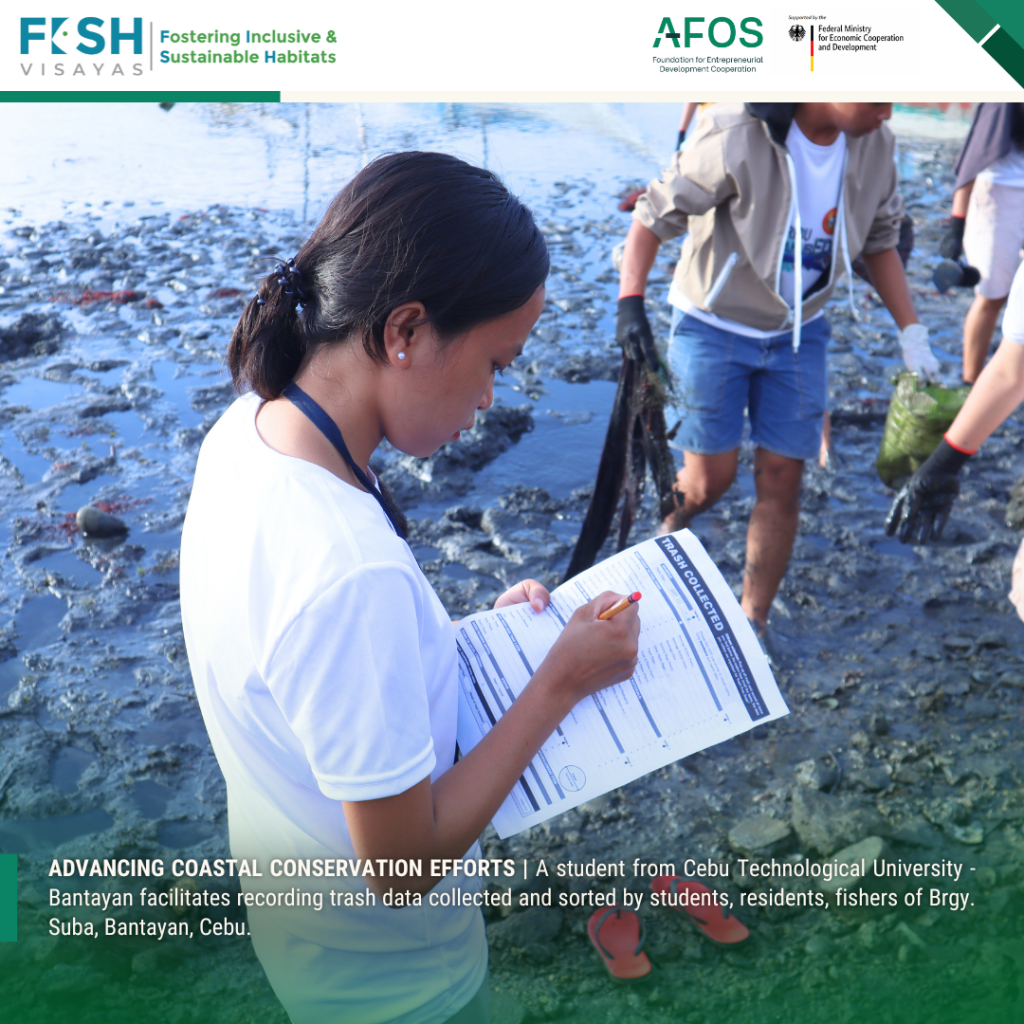
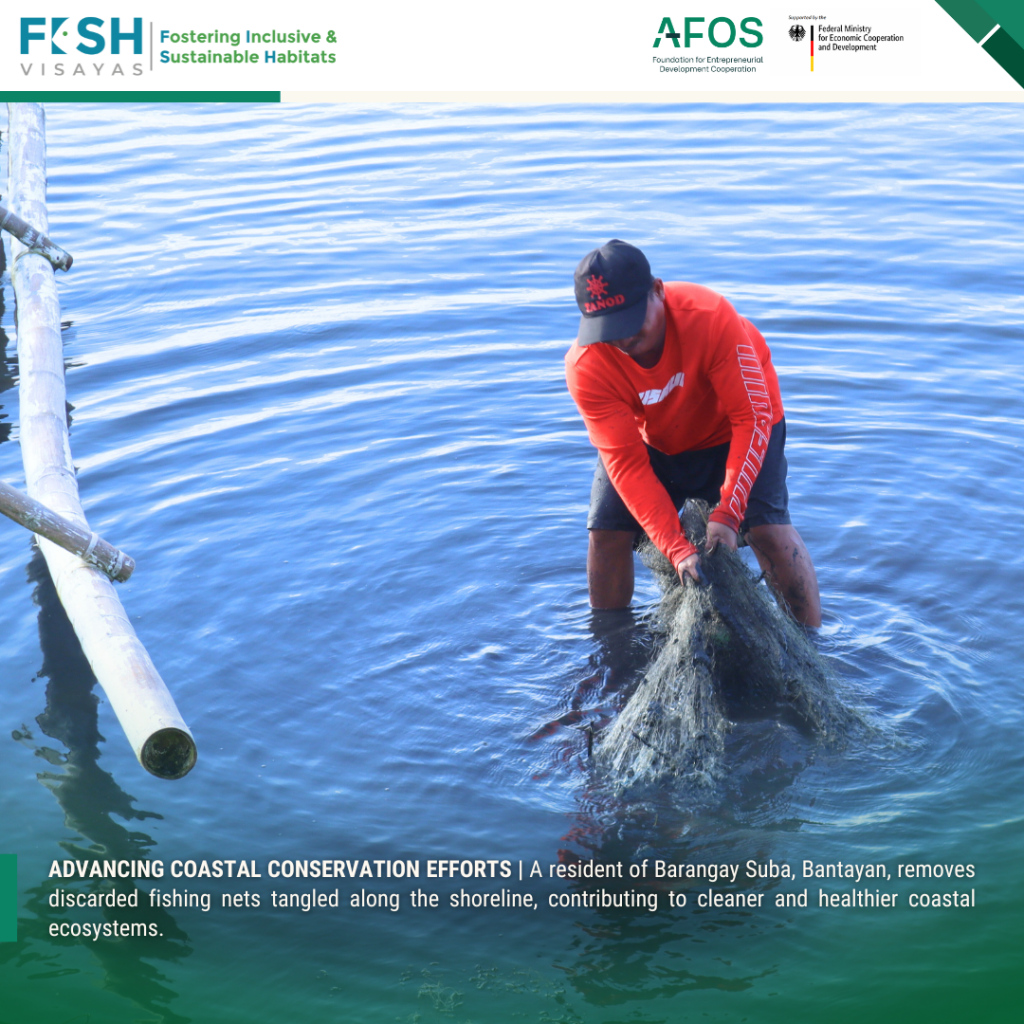
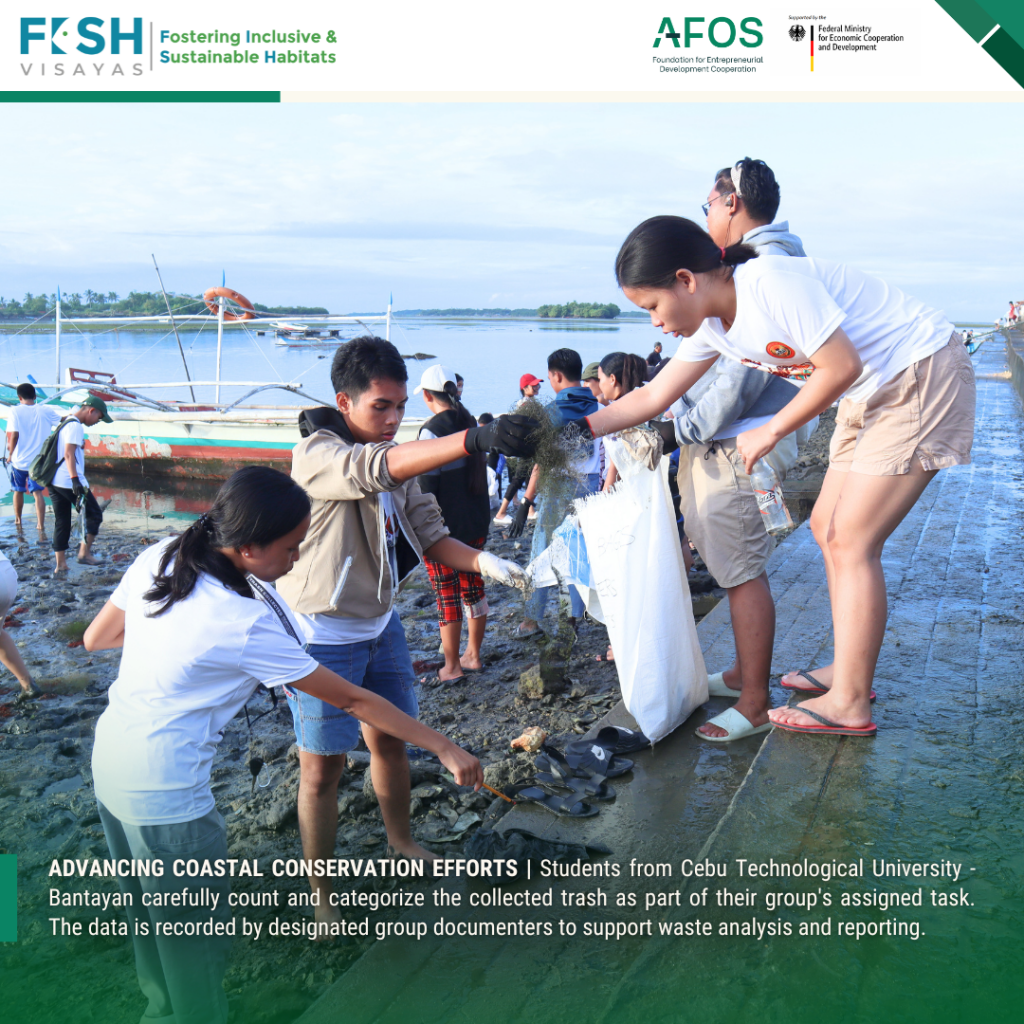
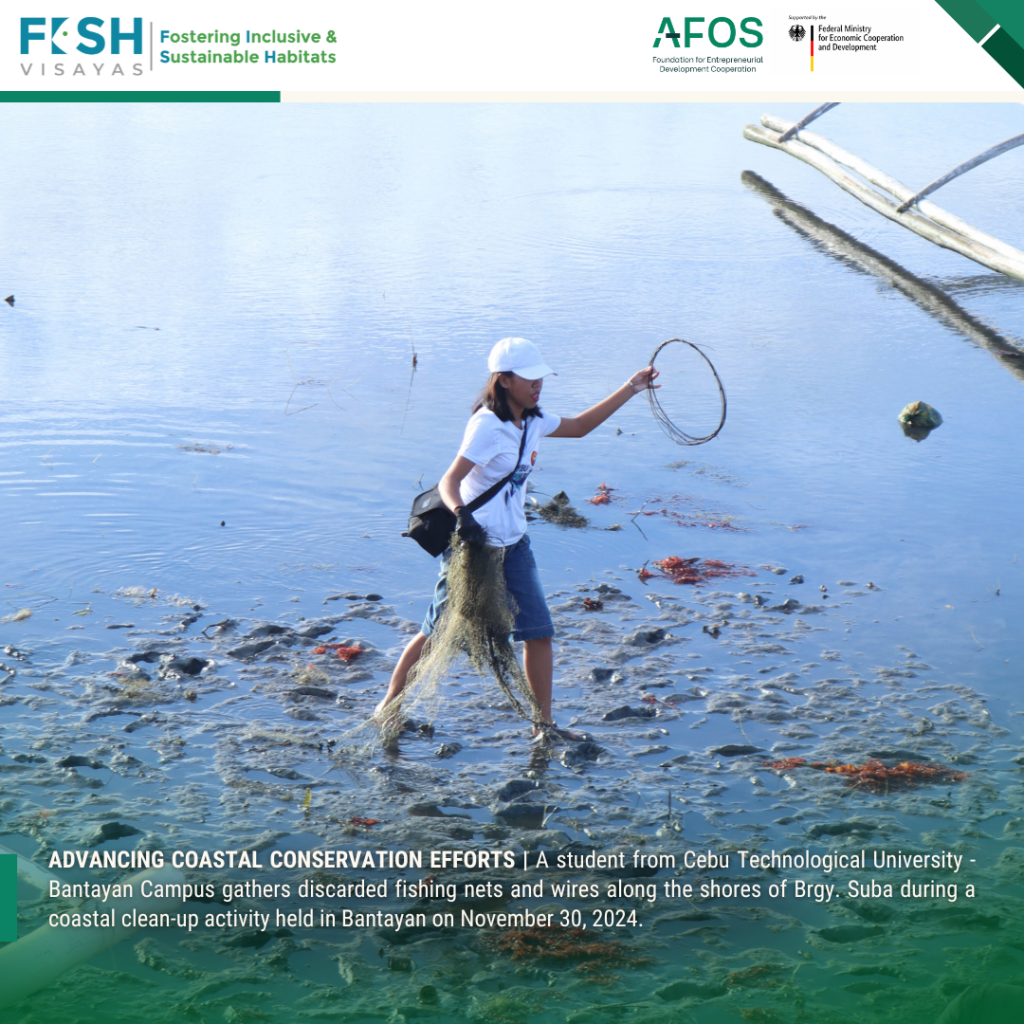
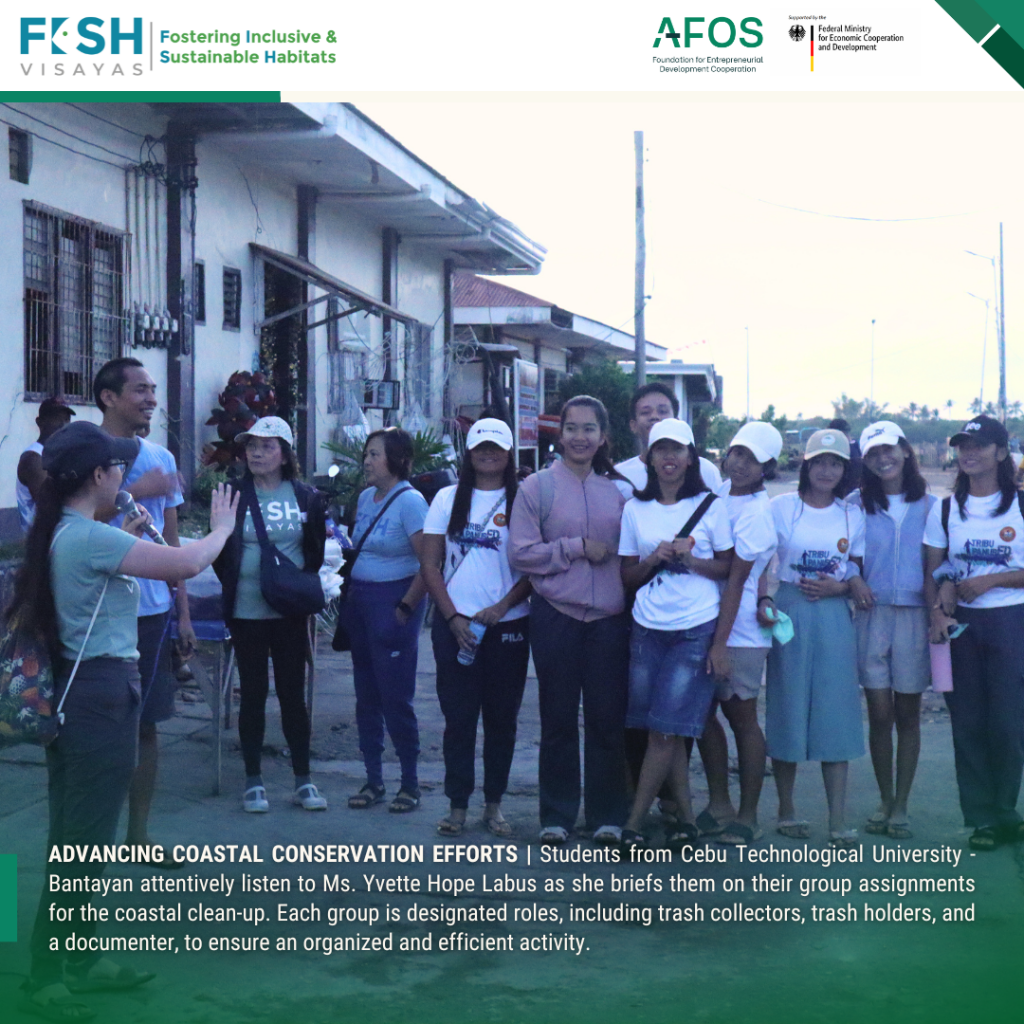
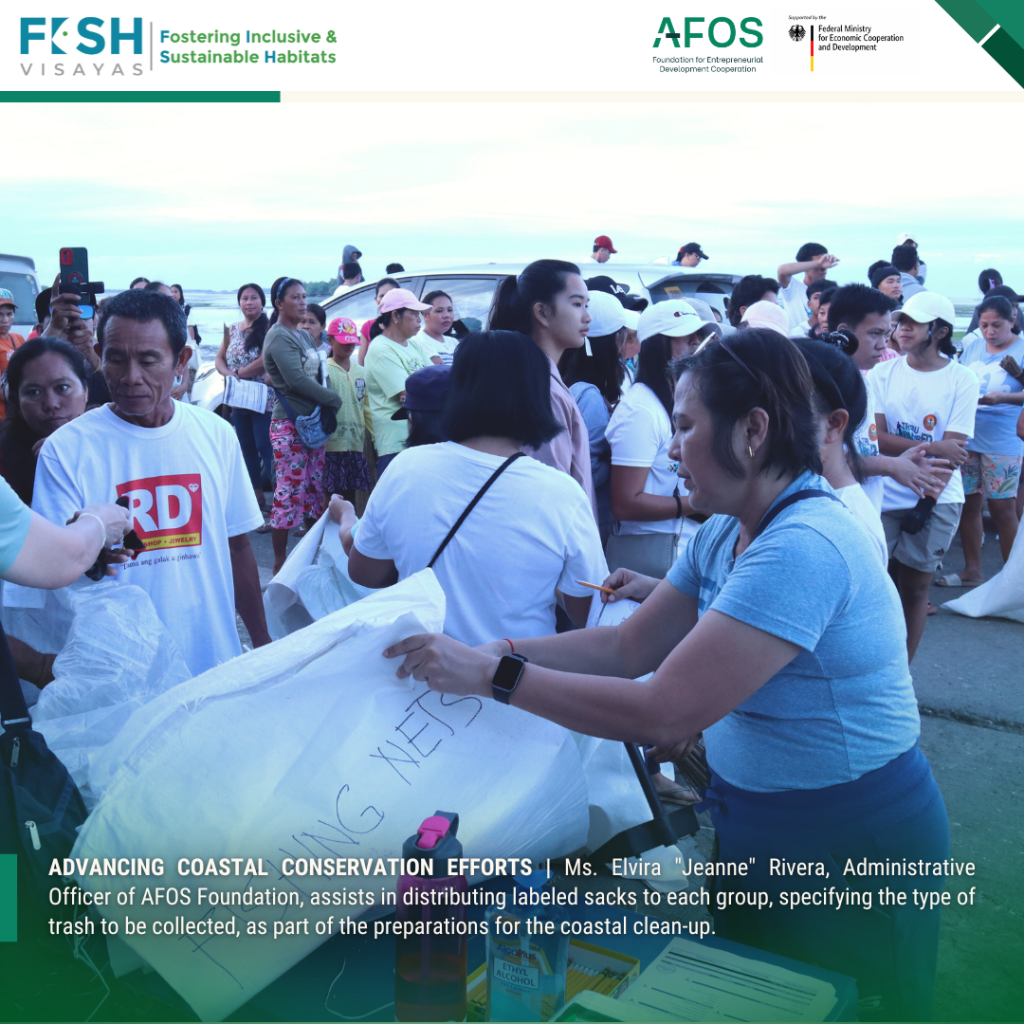

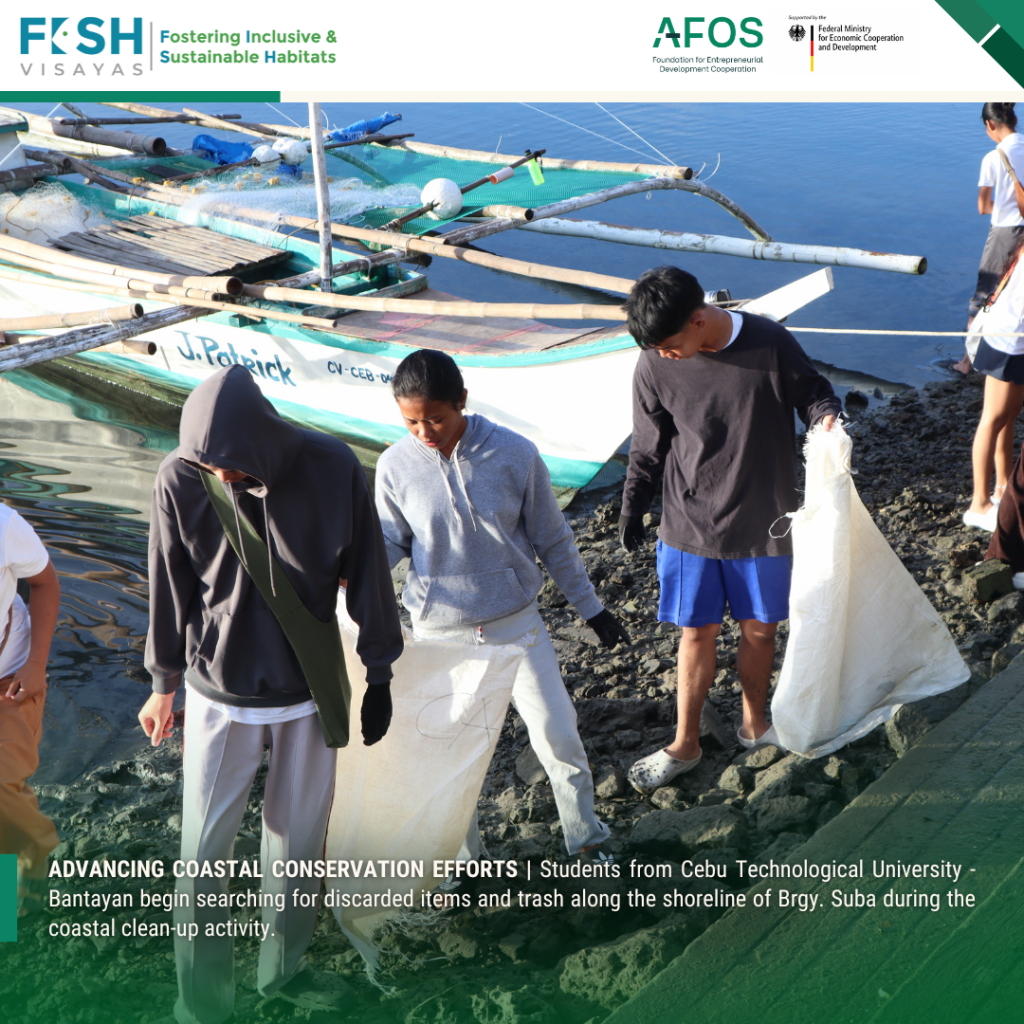
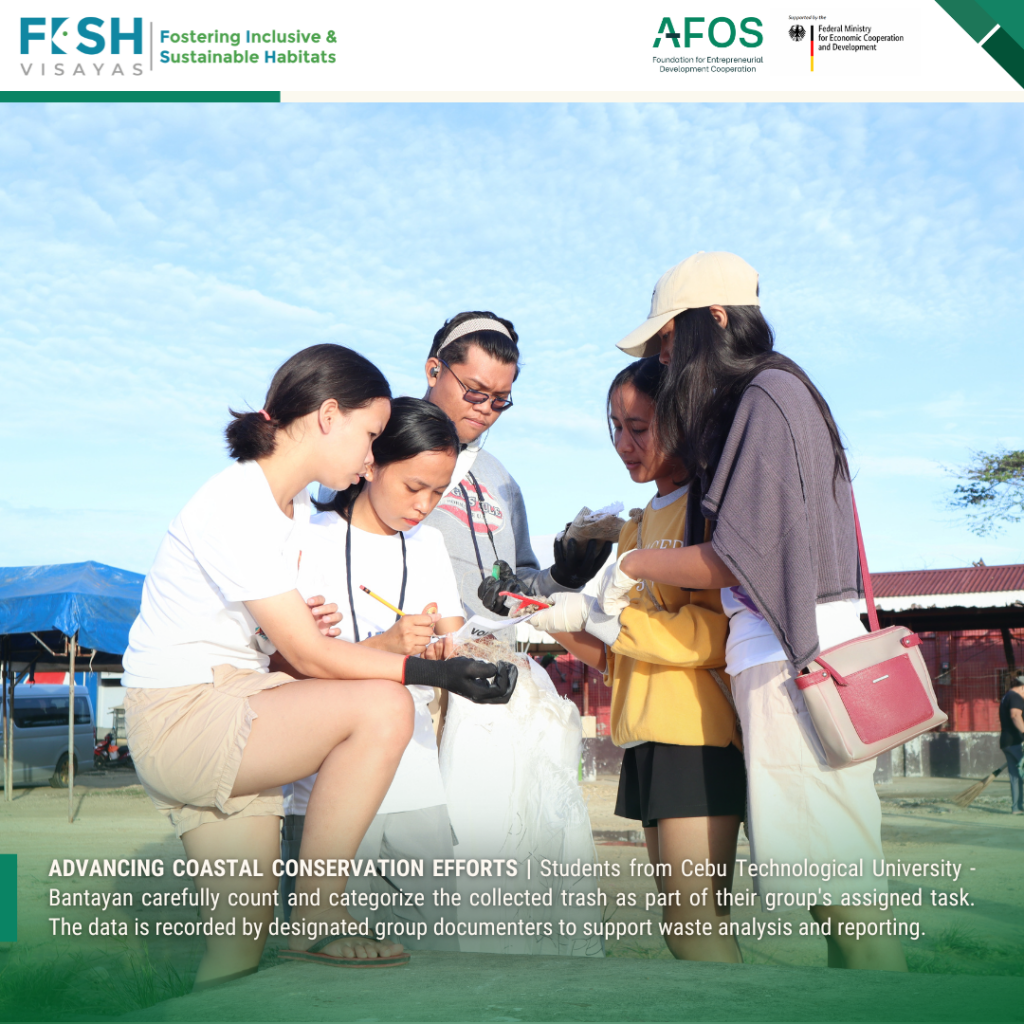
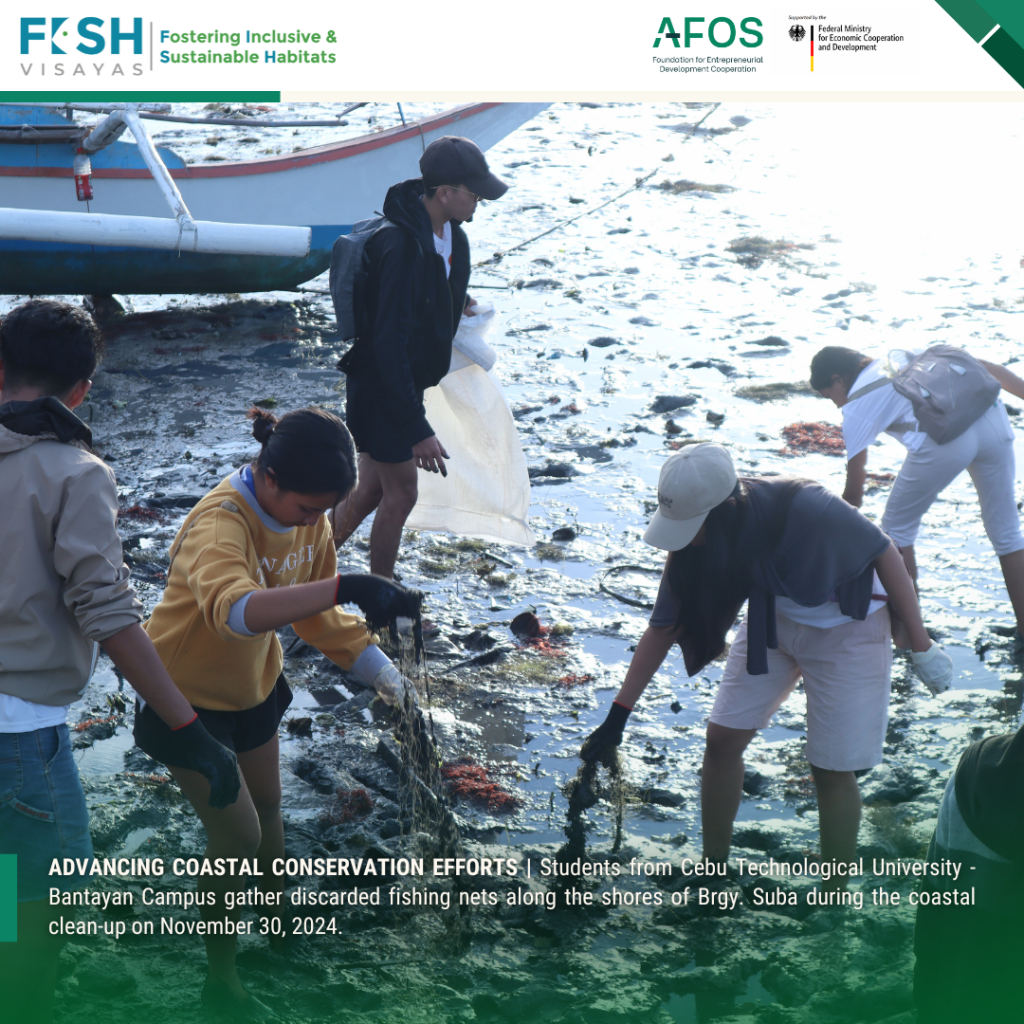
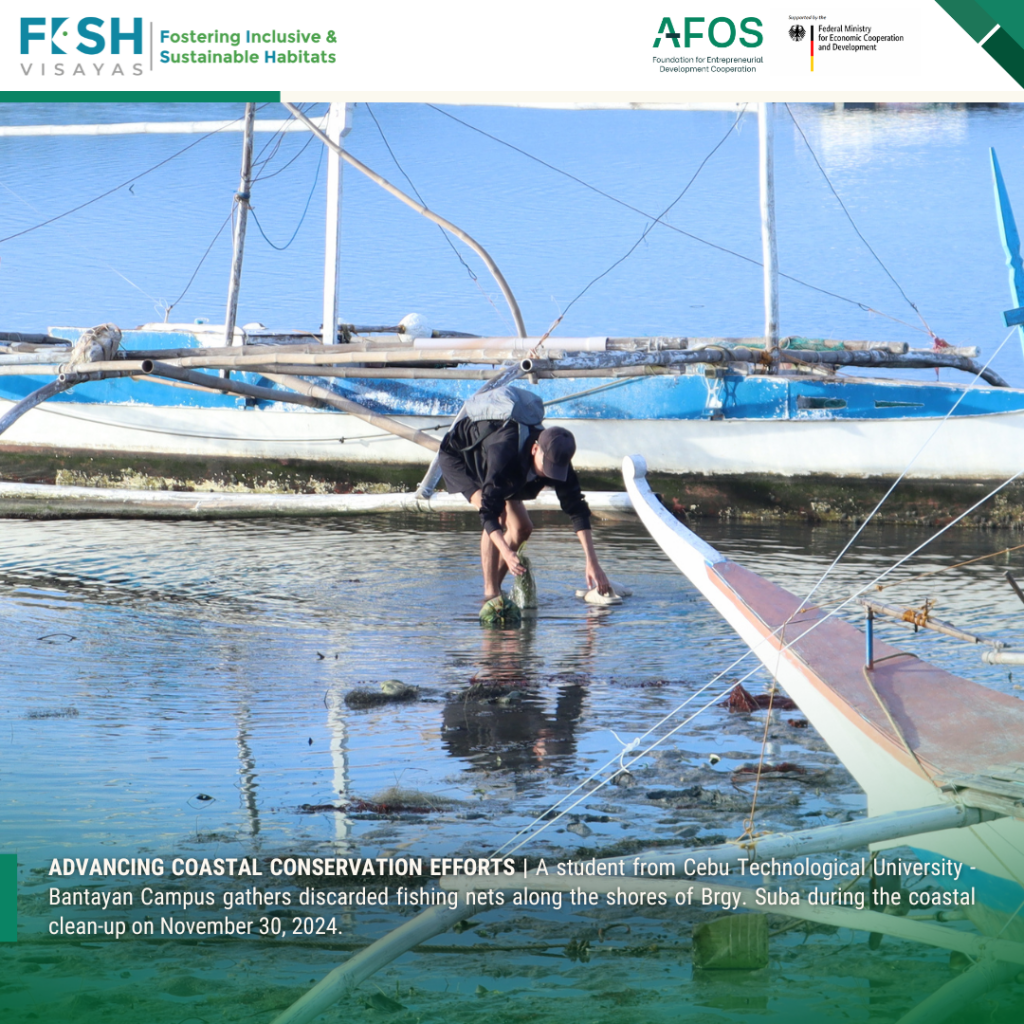
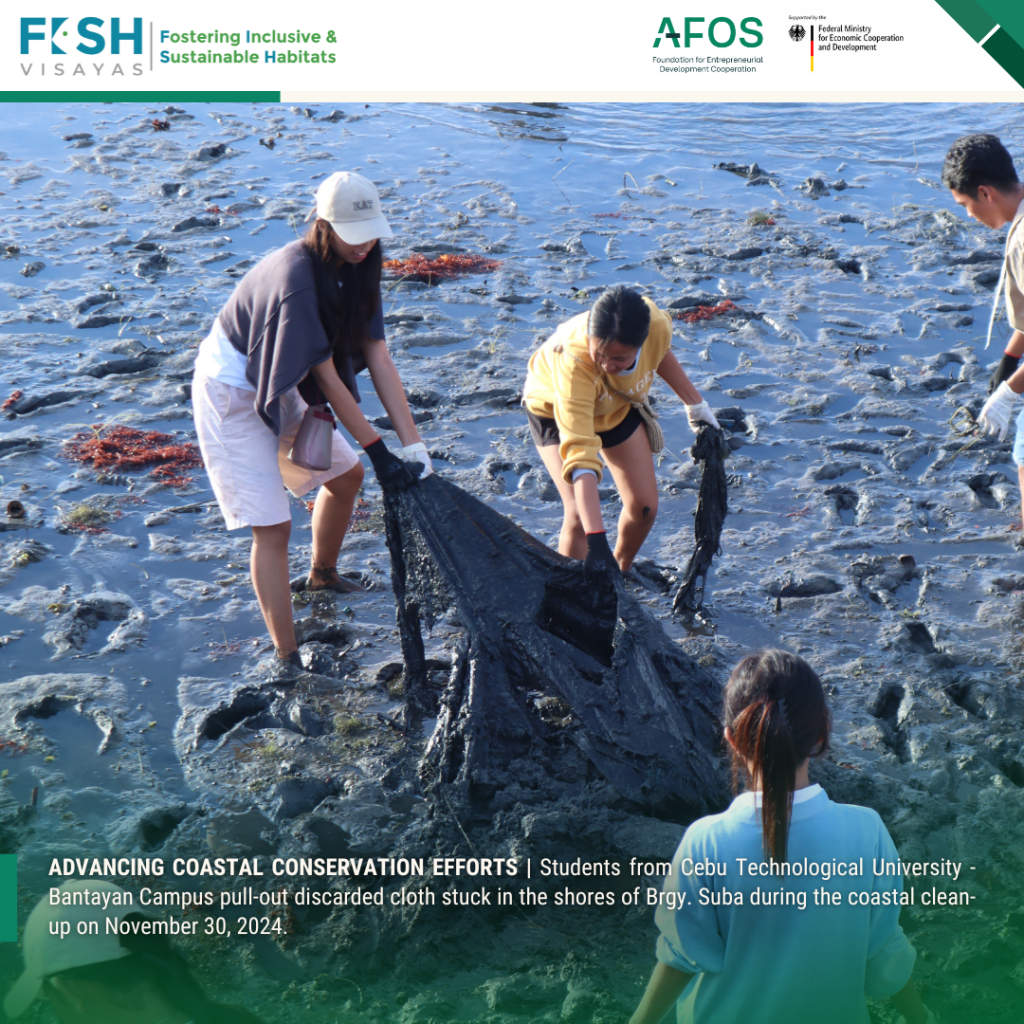
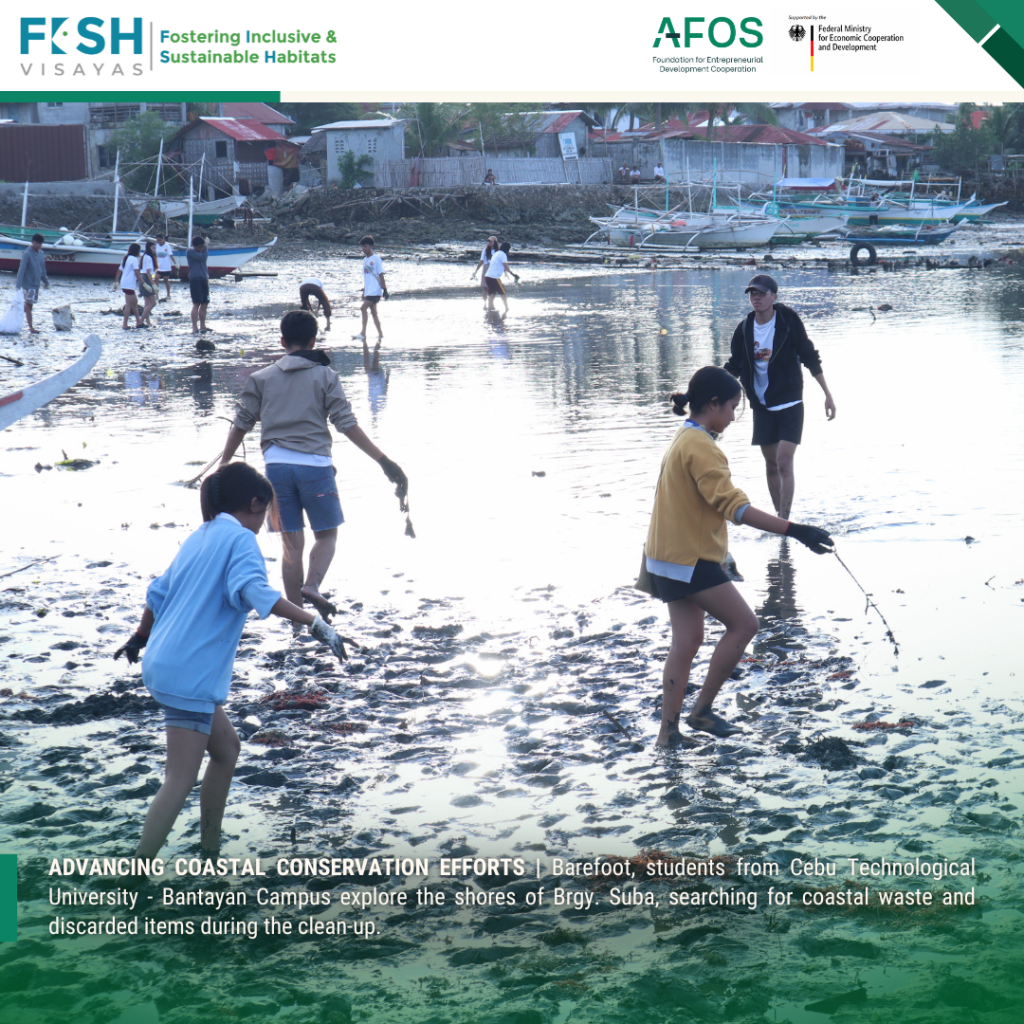
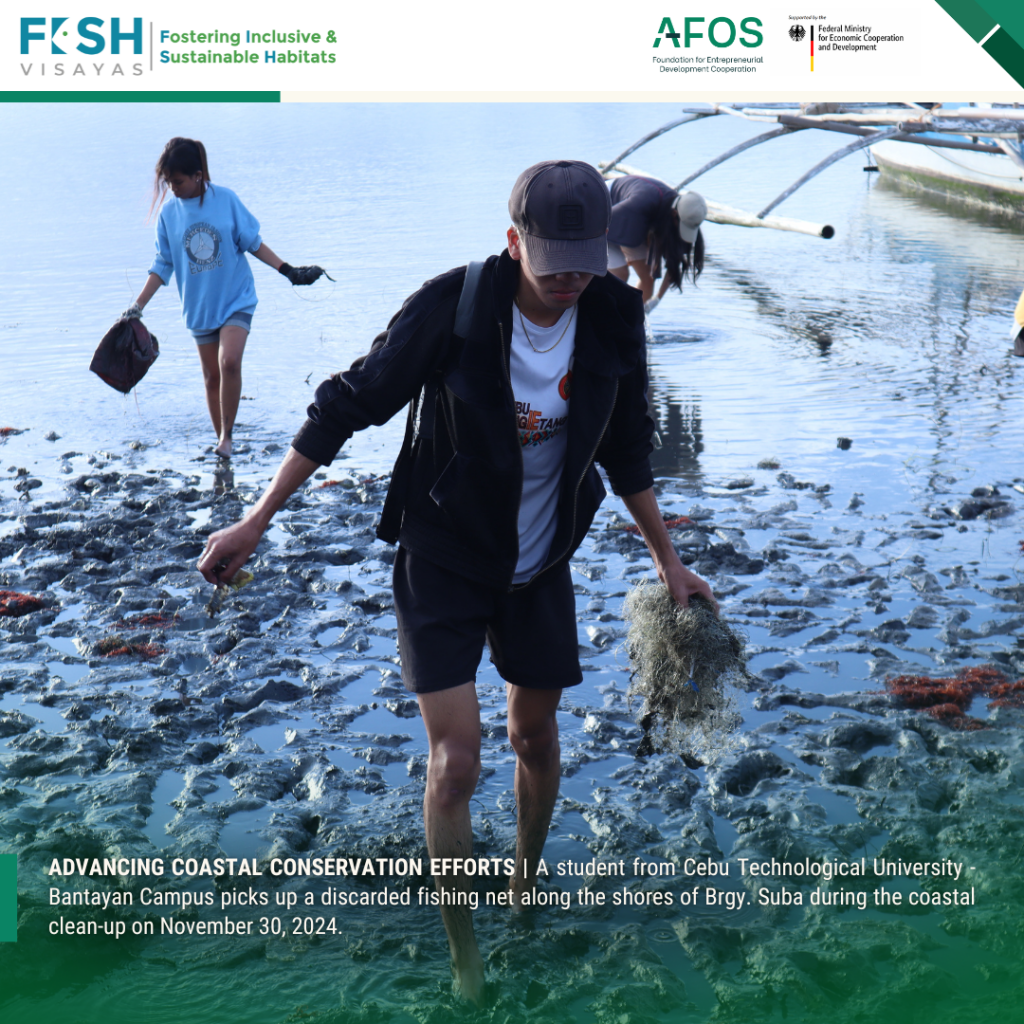
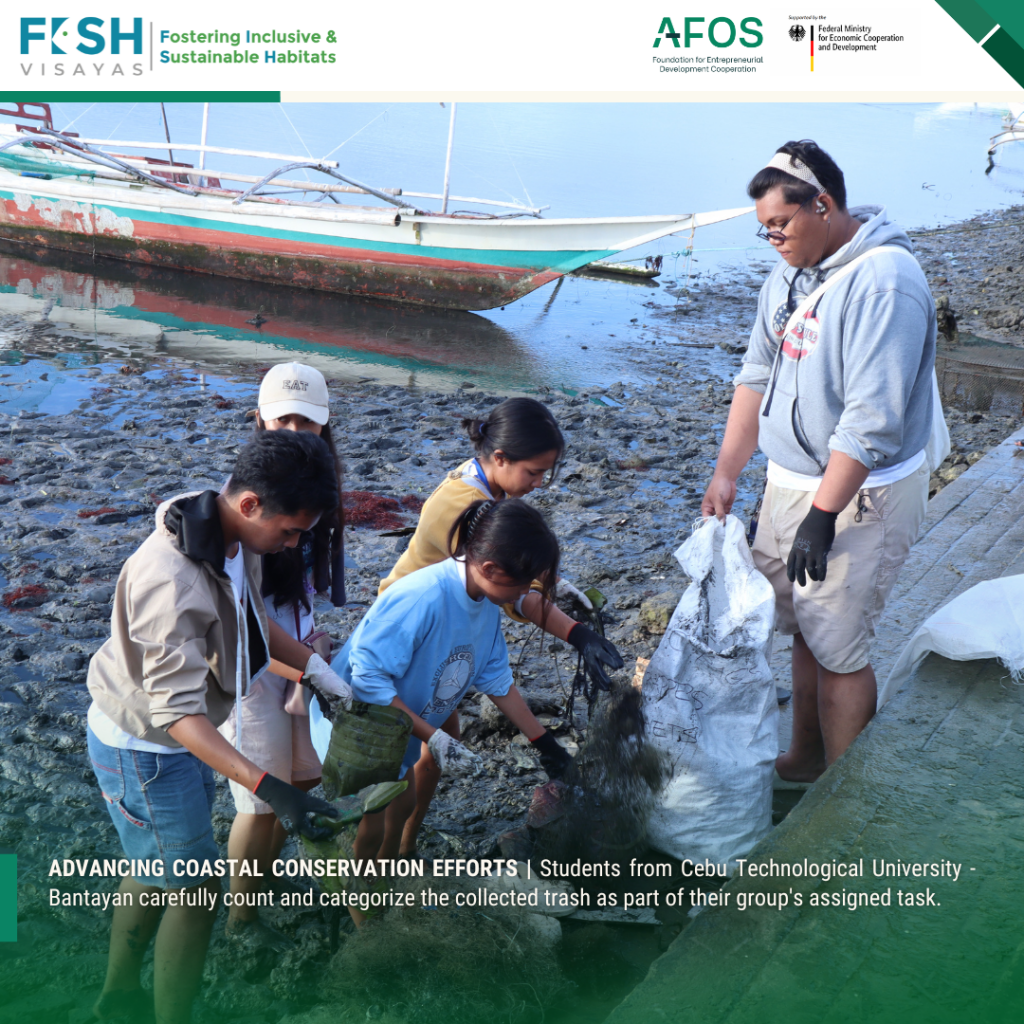
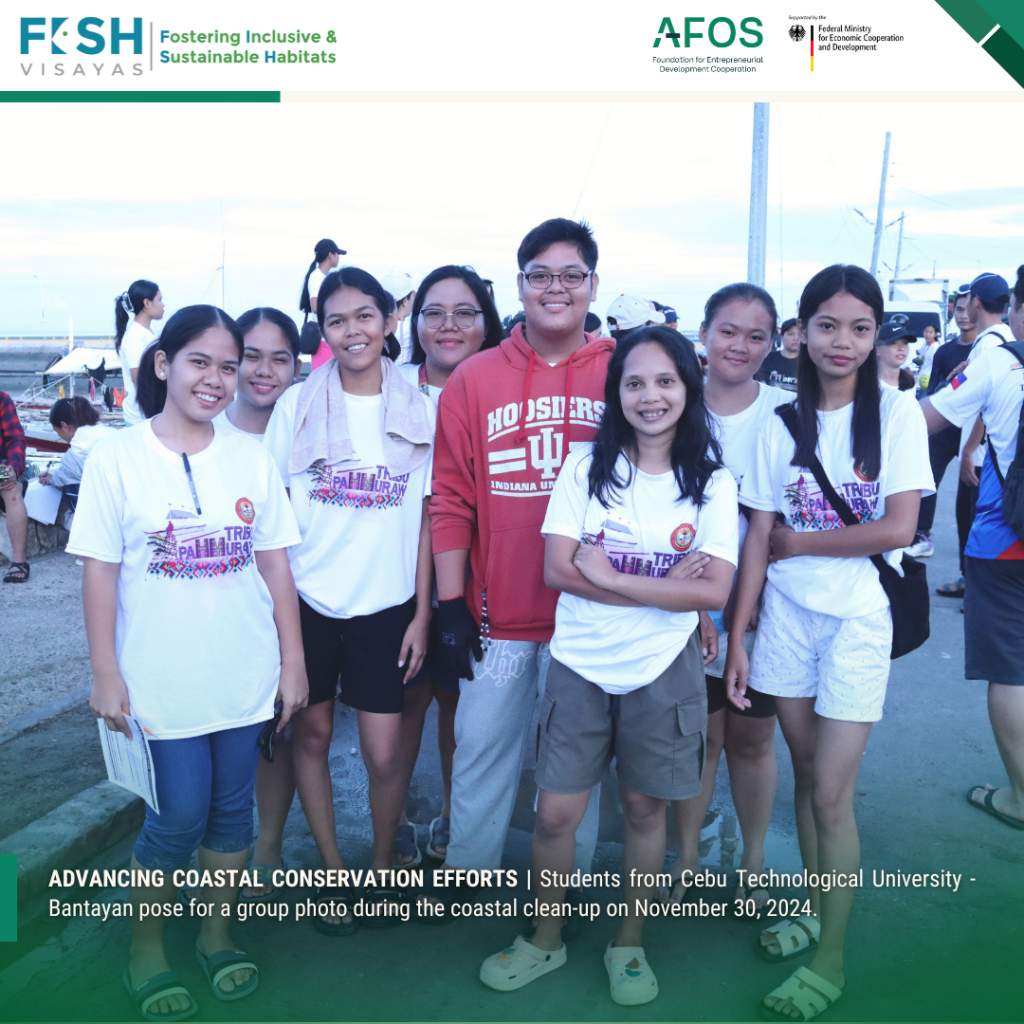
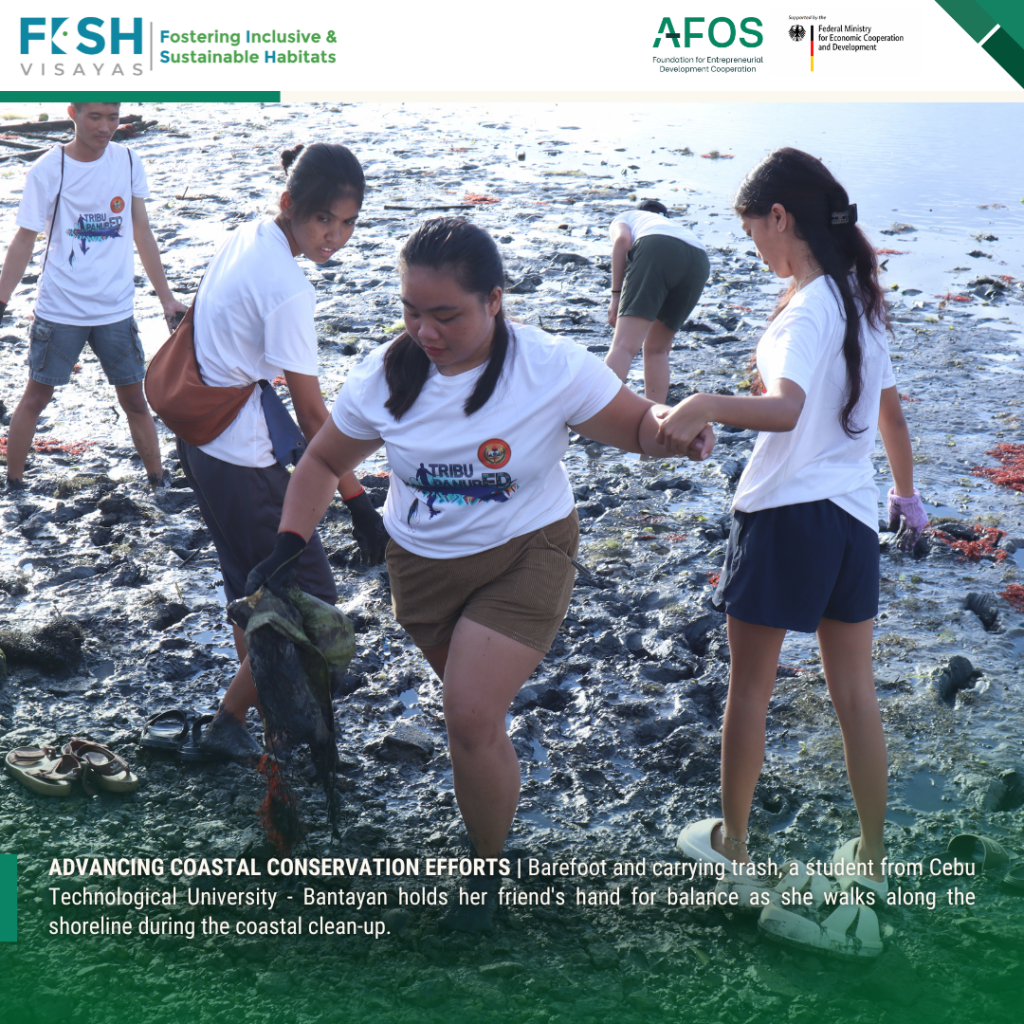
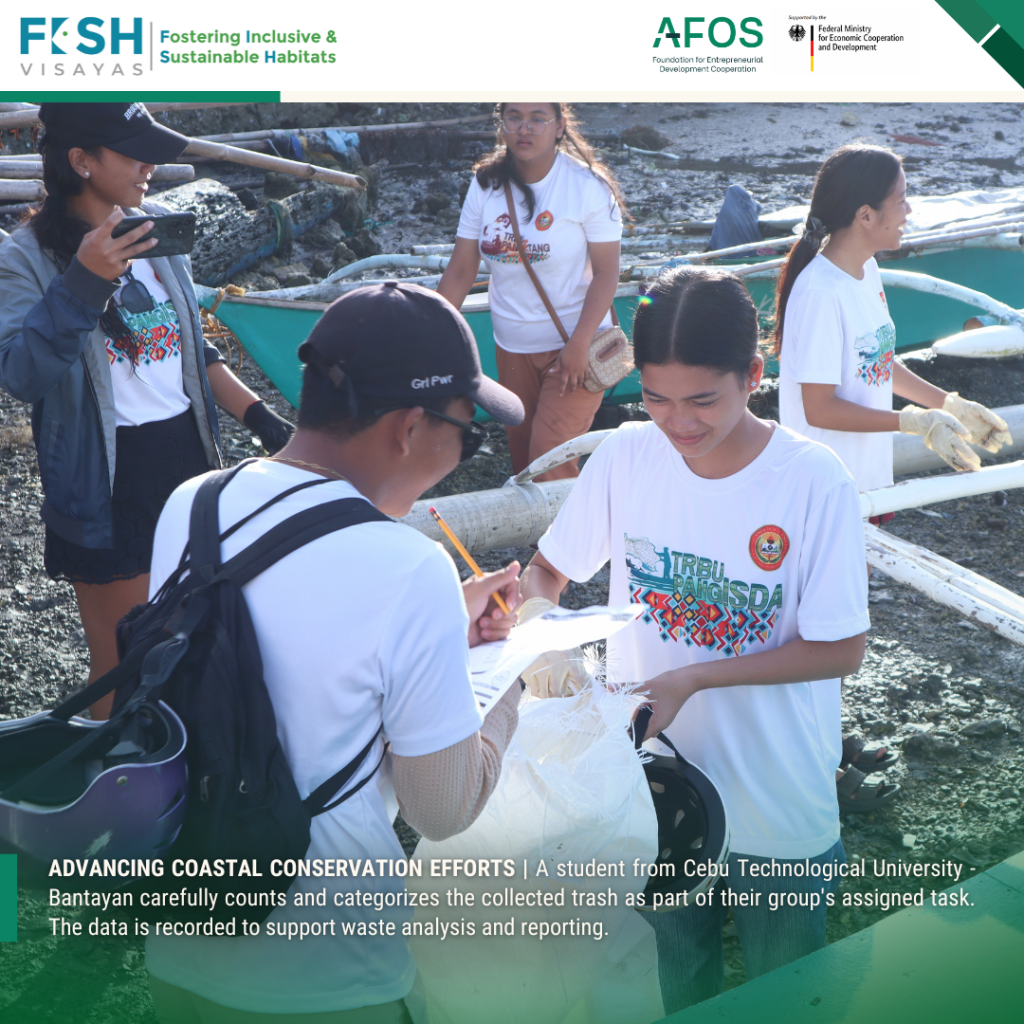
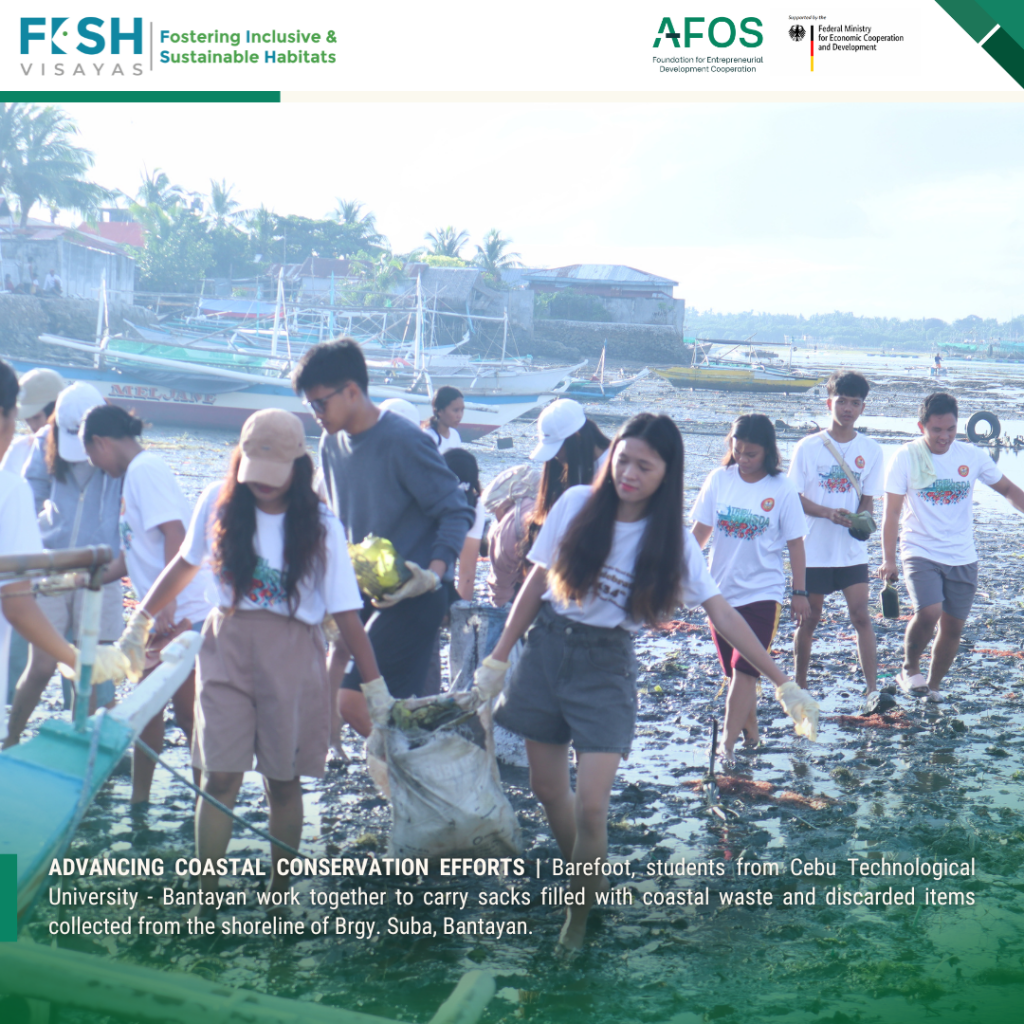
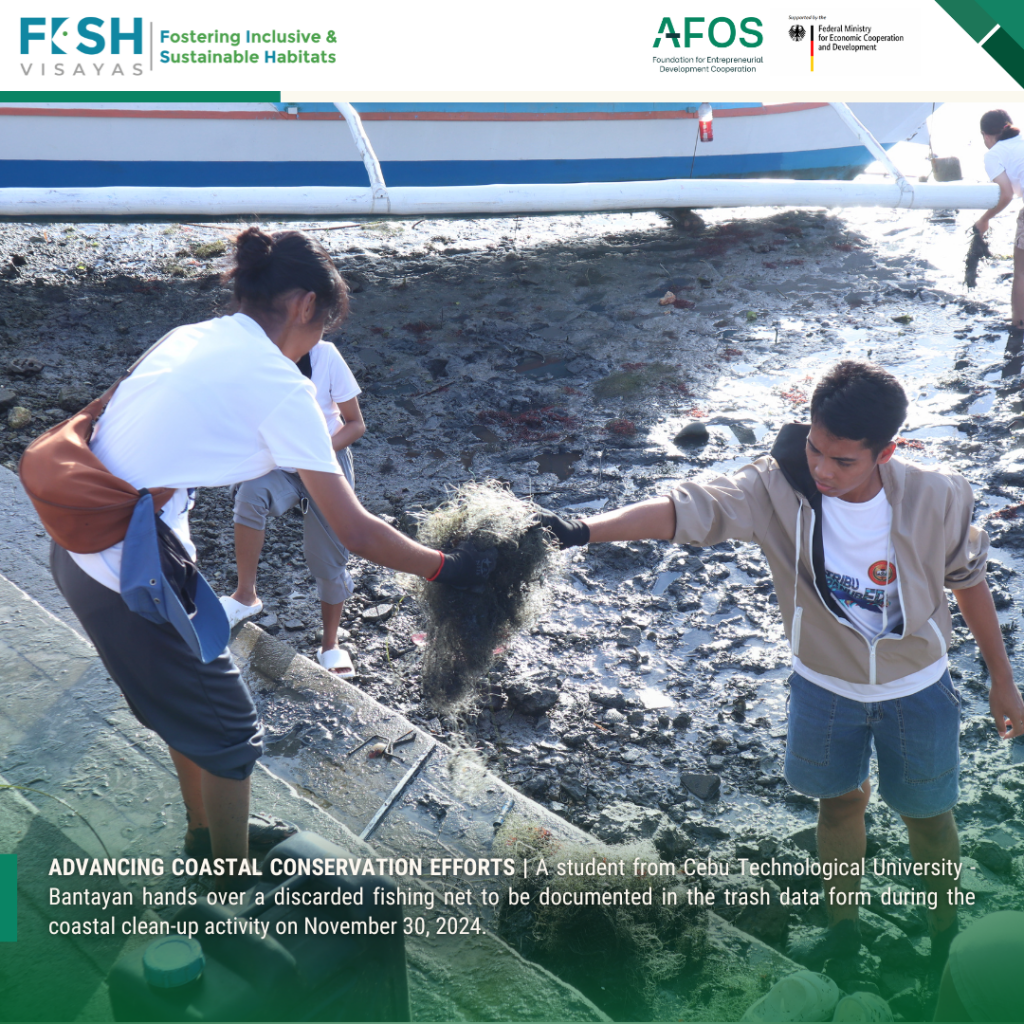
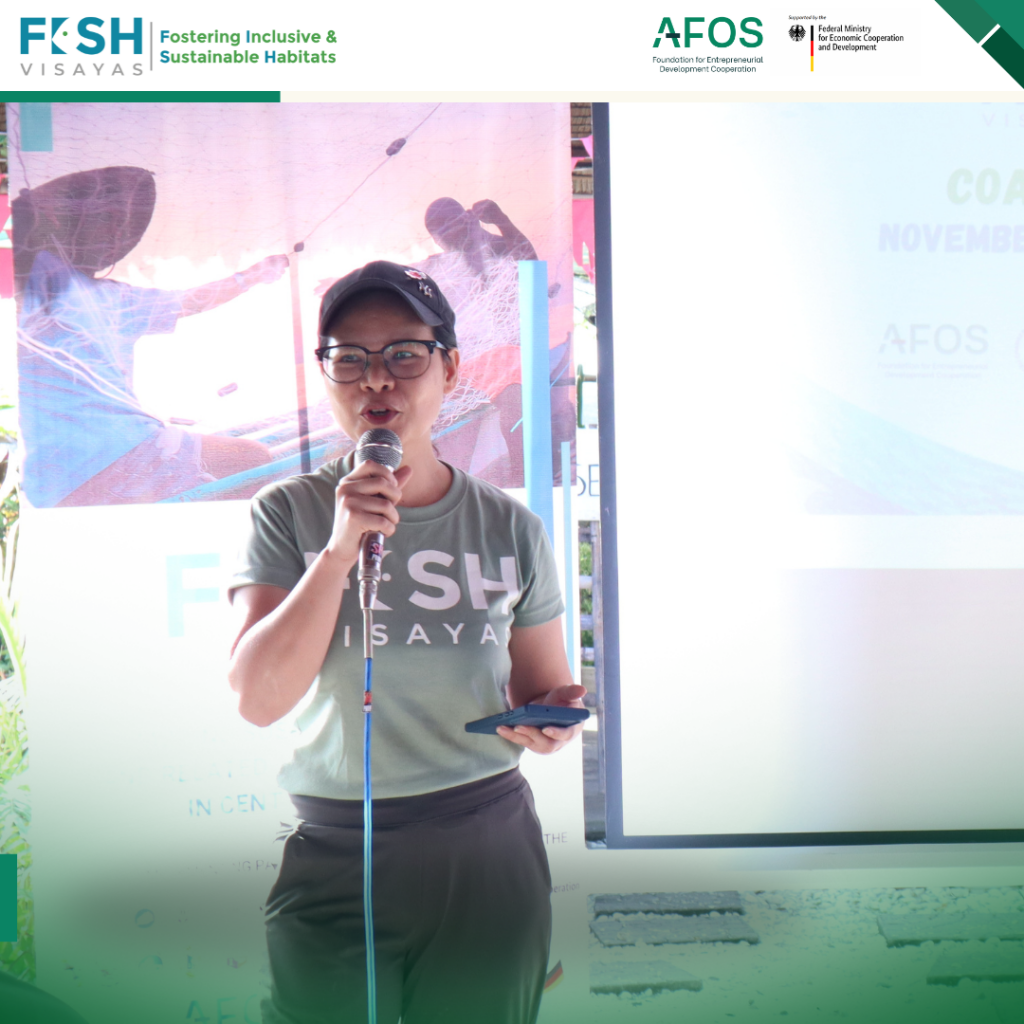
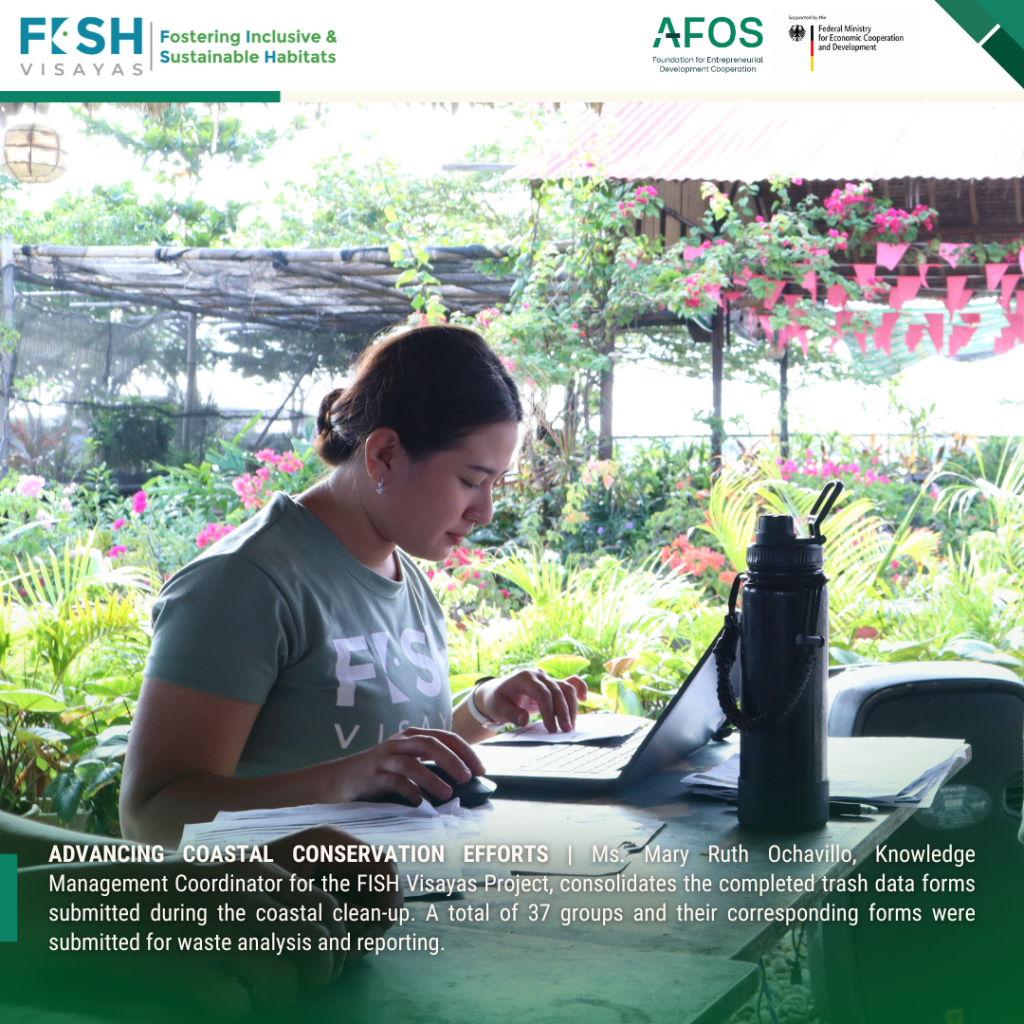
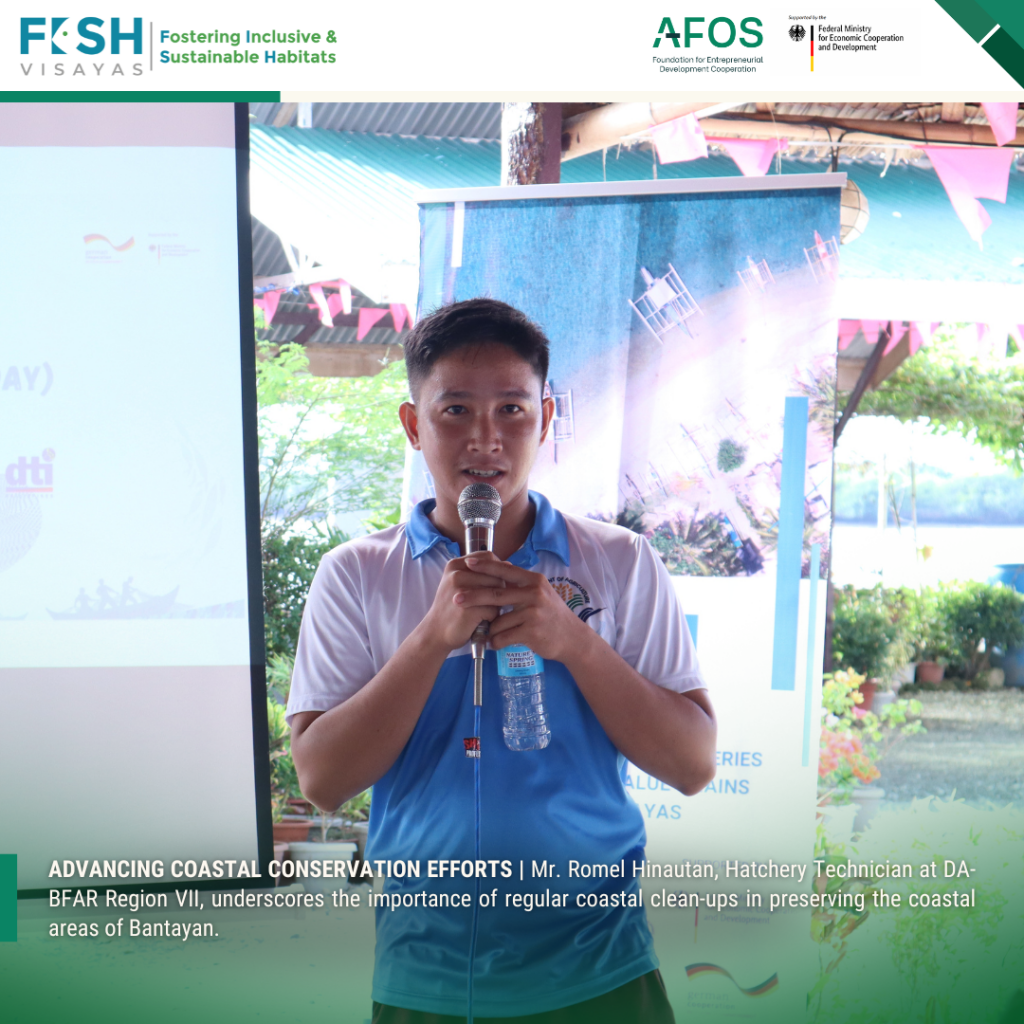
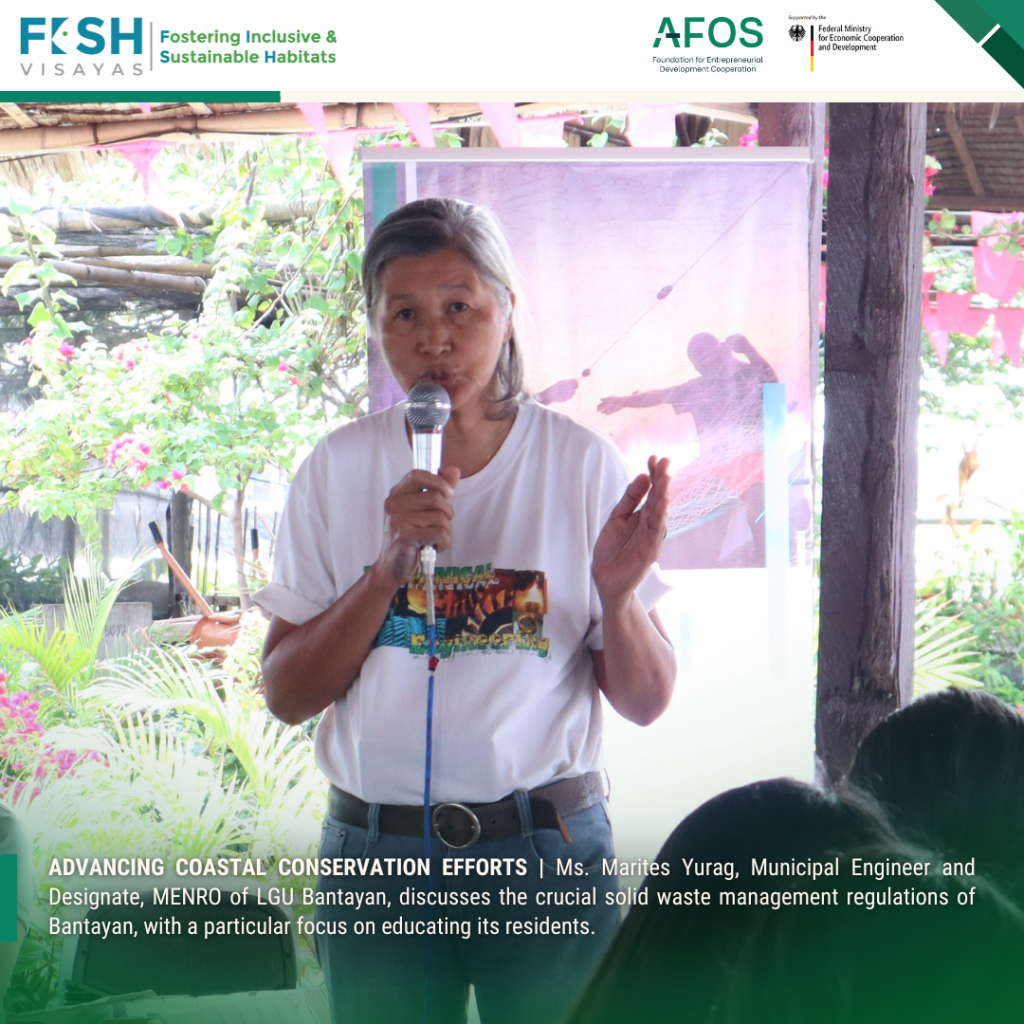
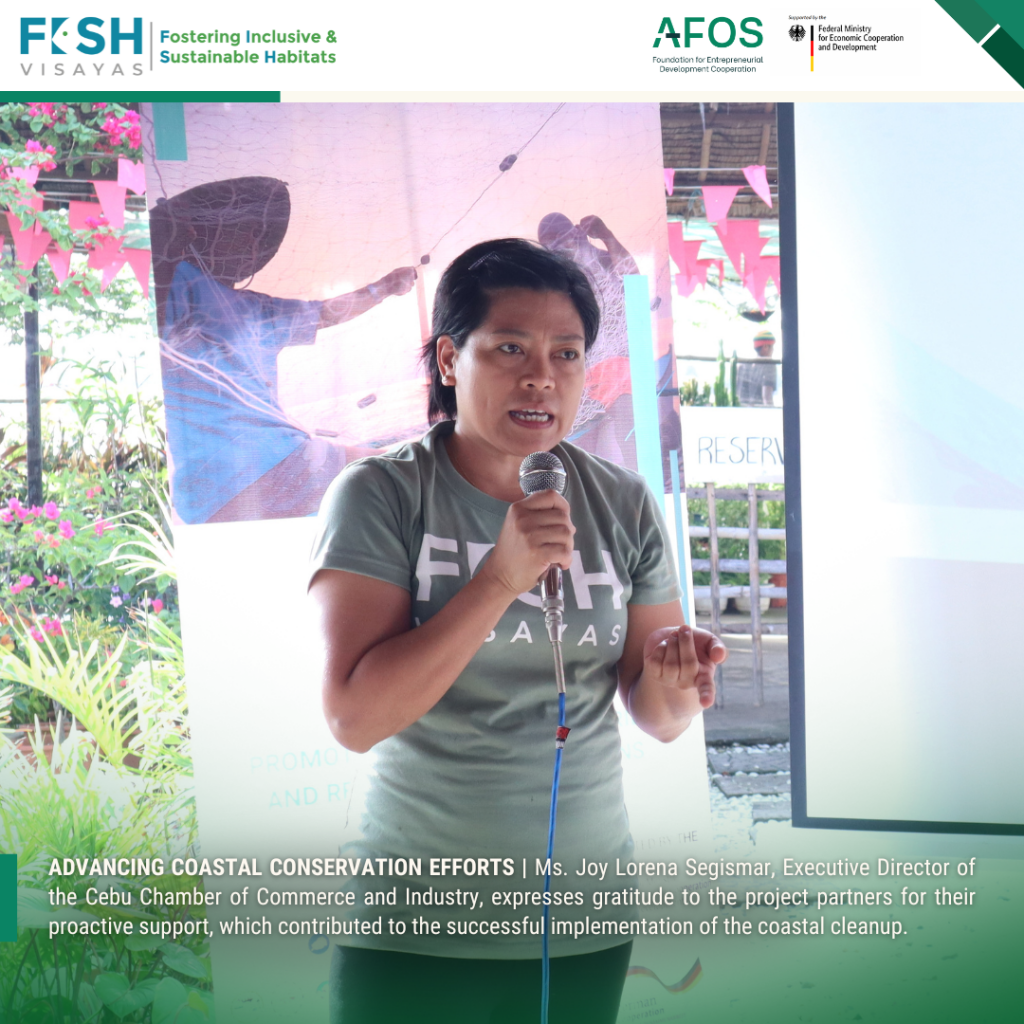
Bantayan, Cebu – On November 30, 2024, 403 volunteers participated in a coastal clean-up activity organized by the FISH Visayas Project, collecting a total of 98 sacks of trash. The event aimed to reinforce the integration of regular coastal cleanups into the local government’s solid waste management program. Over the course of a 30-minute cleanup along a 5-kilometer stretch of shoreline, volunteers removed a significant amount of coastal waste in Brgy. Binaobao and Brgy. Suba, highlighting the need for continued community engagement in environmental conservation efforts.
Coastal Cleanups in Solid Waste Management
Integrating coastal cleanups into local government solid waste management programs is an ongoing initiative of the FISH Visayas Project. Aside from the coastal clean-up activity, the debriefing session included an open discussion on practical waste management knowledge, such as waste segregation, composting, and compliance with existing solid waste management laws and regulations. Significantly, the project has presented the consolidated trash data collected from the clean-up.
Trash Data Shapes Policies in Waste Management
Collecting and analyzing data from coastal cleanups is crucial for informed policy-making at both the local and national levels. To address the need for consistent documentation, volunteers were introduced to the trash data form developed by Ocean Conservancy. These forms enable barangays and volunteers to record coastal waste by type, including details on the number of items collected, bags filled, the weight of trash, and the distance cleaned. Such data supports local governments in shaping targeted policies for waste management.
Most Commonly Found Items
During the 30-minute coastal clean-up along a 5-kilometer stretch of shoreline, a total of 98 sacks of coastal waste were collected, reflecting the significant presence of waste in the area. The most commonly found items were plastic and glass materials, with glass beverage bottles being the most numerous at 743 pieces, followed by plastic bags and wrappers (691 pieces) and plastic beverage bottles (525 pieces).Other notable waste items included beverage cans (344 pieces), fishing nets (265 pieces), and cigarette butts (282 pieces), all contributing to the environmental burden of the coastal area. Additionally, 108 metallic bottle caps were collected, further highlighting the impact of single-use products on the marine ecosystem.
Waste Analysis and Reporting
The data collected during the coastal cleanup offers valuable insights into the types of waste generated by the community and the lifestyle of its residents. The high number of plastic and glass beverage bottles, cans, plastic bags, and wrappers suggests that beverages and packaged goods, particularly in single-use packaging, are commonly consumed in the area. This indicates a lifestyle that likely involves frequent consumption of such packaged drinks and goods, which significantly contribute to waste accumulation.
Meanwhile, the presence of fishing nets (265 pieces) suggests that fishing is a common livelihood activity, with discarded nets possibly resulting from abandoned or damaged equipment used by local fishermen or other fishing-related industries.
Lastly, the presence of cigarette butts (282 pieces) points to smoking habits among residents, with tobacco waste being a significant environmental concern.
Based on the data, there is a need to implement and strengthen policies that reduce the use of single-use plastics, promote continuous waste reduction and recycling programs, and advocate for sustainable fishing practices. Regular coastal cleanups should also be encouraged to further drive coastal conservation efforts within the local community.
The 403 Volunteers Uniting for Coastal Conservation
The coastal cleanup commenced with a total of 403 volunteers from various groups, including, students from Cebu Technological University – Bantayan, residents of Brgy. Suba and Brgy. Binaobao, LGU Bantayan officials and Bantay Dagat, DA-Bureau of Fisheries and Aquatic Resources, and FISH Visayas Project team from AFOS Foundation and the Cebu Chamber of Commerce and Industry.
Key involvement from the DRRMU office, as well as the Municipal Environment and Natural Resources office of Bantayan, contributed to the event’s success.
Through this initiative led by the FISH Visayas, frequent coastal cleanups are being advocated to strengthen the community’s commitment to environmental health and public well-being. These efforts ultimately support marine ecosystems, safeguard biodiversity, and enhance food security for coastal communities.
—
The Coastal Cleanup in Bantayan aspires to achieve Result Area 4: Resource Protection of the FISH Visayas Project.
MORE NEWS
Call for Proposals: Project Acquisition Consultant to Identify and Secure Funding Opportunities for AFOS Foundation
CALL FOR PROPOSALS Terms of Reference: Project Acquisition Consultant to identify and secure funding opportunities for AFOS Foundation Published by Mary Ruth Ochavillo on May 29, 2025 DESCRIPTION OF ASSIGNMENT Engagement of a Project Acquisition Consultant to identify and secure funding opportunities from various sources for the expansion of the FISH Visayas Project’s positive impacts, […]
FISH Visayas Project Recognizes Development Partners and Beneficiaries
CELEBRATING SUCCESS FISH Visayas Project Recognizes Development Partners and Beneficiaries By Mary Ruth Ochavillo. Posted on JULY 02, 2025. Previous Next Cebu City, Cebu – As part of the 2025 Regional Science, Technology, and Innovation Week (RSTW), the FISH Visayas Project paid tribute to its development partners and project beneficiaries during the Networking Night. The evening […]
FISH Visayas Project banners Blue Economy initiatives in Central Visayas
ADVANCING BLUE ECONOMY AGENDA THRU FISH VISAYAS FISH Visayas Project banners Blue Economy initiatives in Central Visayas By Mary Ruth Ochavillo. Posted on JULY 02, 2025. Previous Next Cebu City, Cebu – On April 23, 2025, the Fostering Inclusive and Sustainable Habitats (FISH) Visayas Project – Phase II initiated the FISH Visayas Forum, bringing together partners […]
Call for Proposals: Terms of Reference for an Exhibit System Service Provider for DOST RSTW 2025
CALL FOR PROPOSALS Terms of Reference: Exhibit System Service Provider for DOST RSTW 2025 Published by Mary Ruth Ochavillo on April 07, 2025. DESCRIPTION OF ASSIGNMENT An Exhibit System Service Provider to design, supply, install, and manage the exhibit infrastructure and related services for the 2025 Regional Science, Technology, and Innovation Week on April 23 […]
